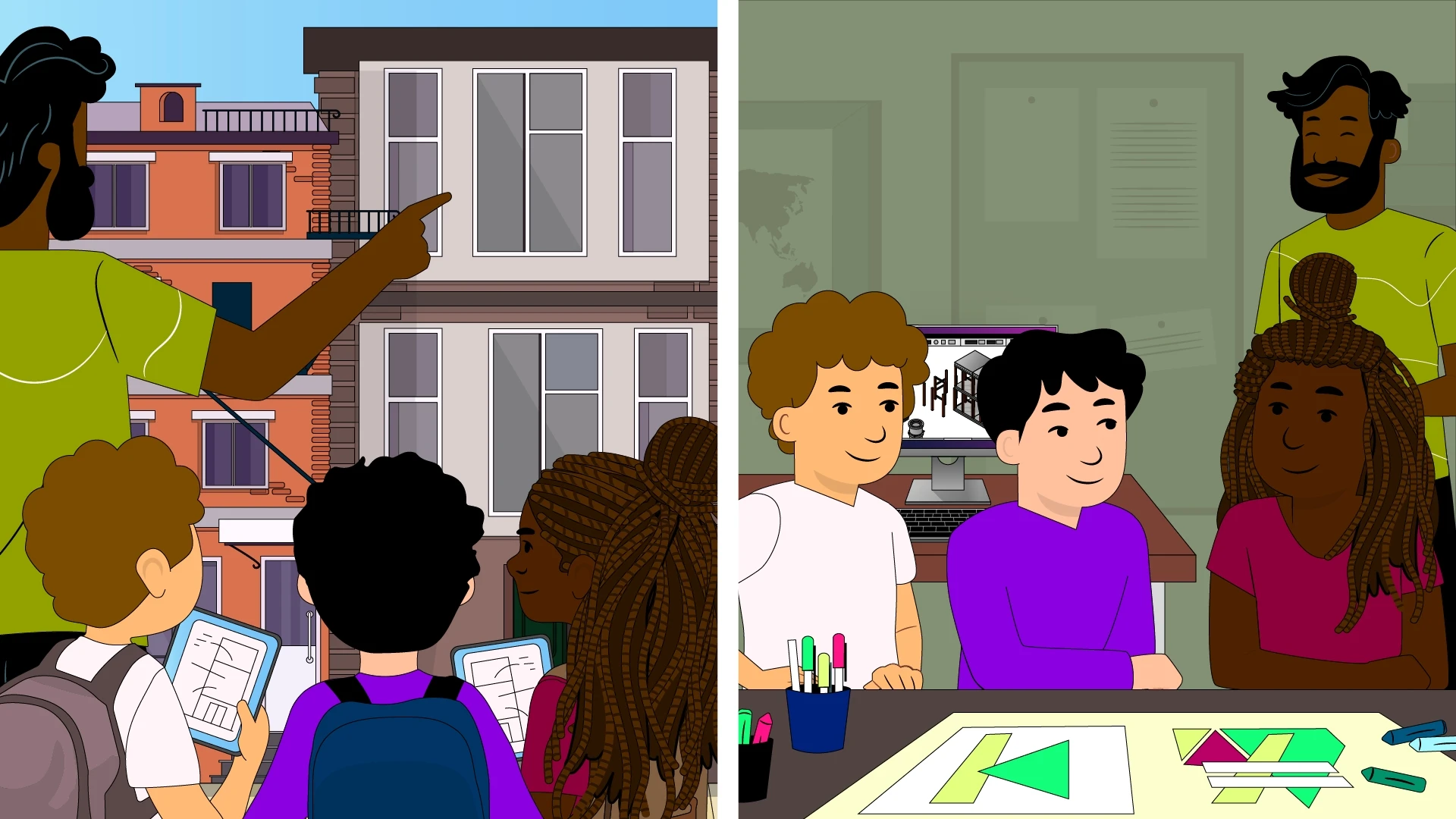With demographics shifting to becoming more diverse in the US, professional organizations and architecture firms are taking concrete steps toward becoming more inclusive. One of the most effective steps is exposing a wider range of young people to the profession. Renee Byng Yancey—the former chief external equity, diversity, and inclusion officer with the AIA—says the organization has recently become involved with the Girl Scouts, thanks to former AIA President Emily Grandstaff-Rice, who spearheaded the effort.
Representatives of the AIA attended the 2023 Girl Scouts Conference, met with Girl Scouts and troop leaders, and engaged in mentorship and design-related activities with them. Along the same lines, NOMA is proud of its Project Pipeline program, which comprises camps held by local chapters to introduce a wider range of students to the architecture field, with the long-term goal of increasing the number of underprivileged licensed architects.
Candice Harrison, director of DEI for the SSOE Group, a global engineering and architecture firm, says that elementary and middle school is the best age group to introduce engineering and architecture. For example, SSOE has a partnership with Toledo Public Schools’ Hawkins STEMM Academy, where the team helps implement hands-on learning and exposes students to careers in engineering, design, and construction.
“We have a team of people from our firm that gets involved in the programs of elementary and middle schools,” Harrison says. “Elementary and middle school is a critical time for exposure to engineering and architecture so that the kids formulate an interest in the industry before high school. That way, they can take the right classes that create the pathway to admission into an engineering program.” Harrison adds that this program also played a role in the academy obtaining its state STEMM designation. SSOE also participates in a Corporate Work Study program with De La Salle North Catholic High School in Portland, OR.
Pugh says that at Gensler, one of the key strategies to foster DEI is finding ways to connect with K-12 schools and universities. The firm is running a unique pilot called GAP (Gensler Apprentice Program), which looks to leverage a nontraditional path into the profession that doesn’t require a college degree and invites young people to work and learn in real time on the job. After two years, they can decide if they want to work for Gensler full-time, pursue a traditional degree, or do something entirely different. “There’s a lot of reasons why college simply isn’t in the cards for some students—financial hardships, pressure to graduate, enter the workforce and bring money back to their household, family dynamics, and not having the grades or test scores, which we know are not indications of a person’s intelligence, aptitude, or predictor for future success,” Pugh says.







